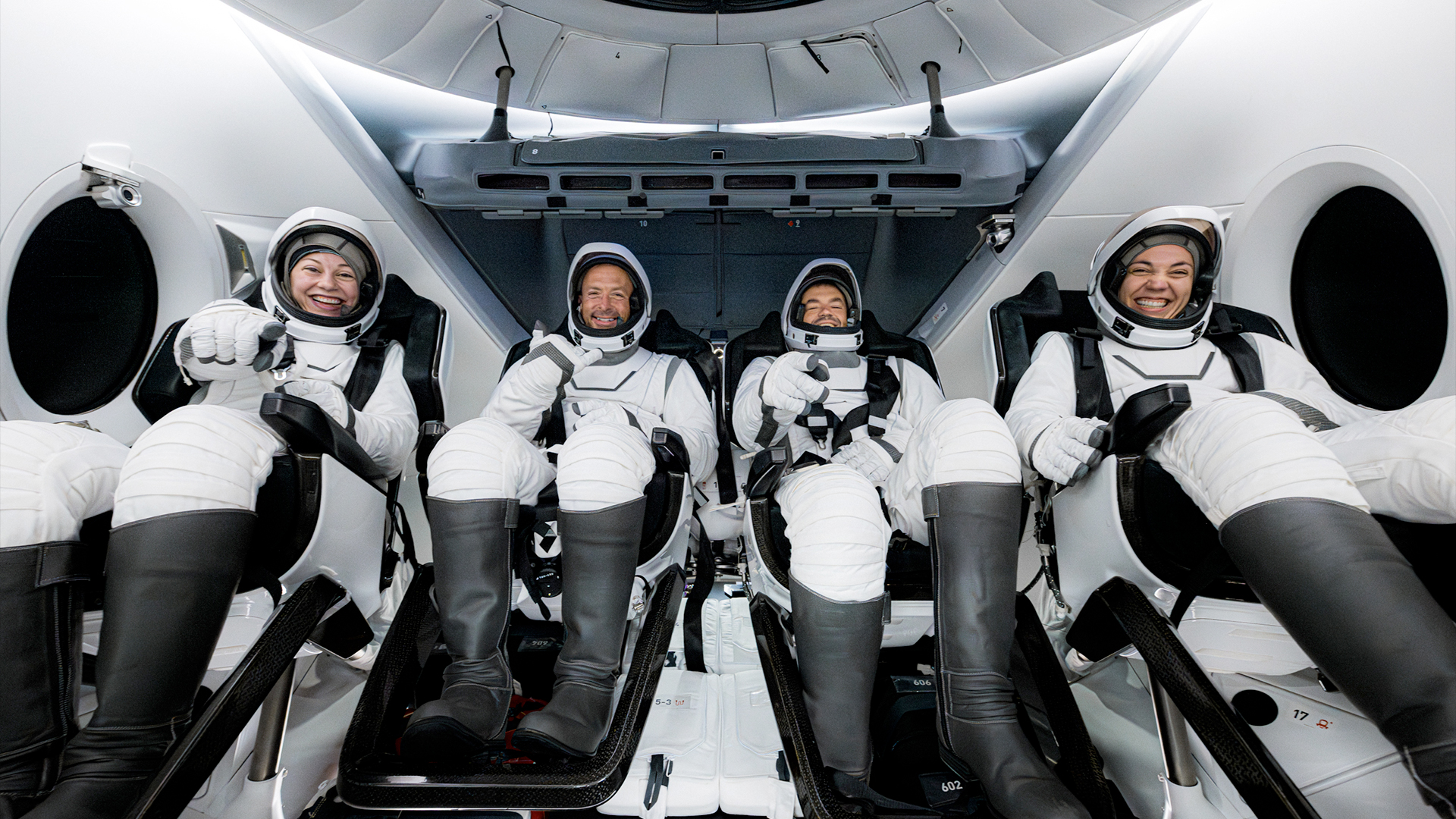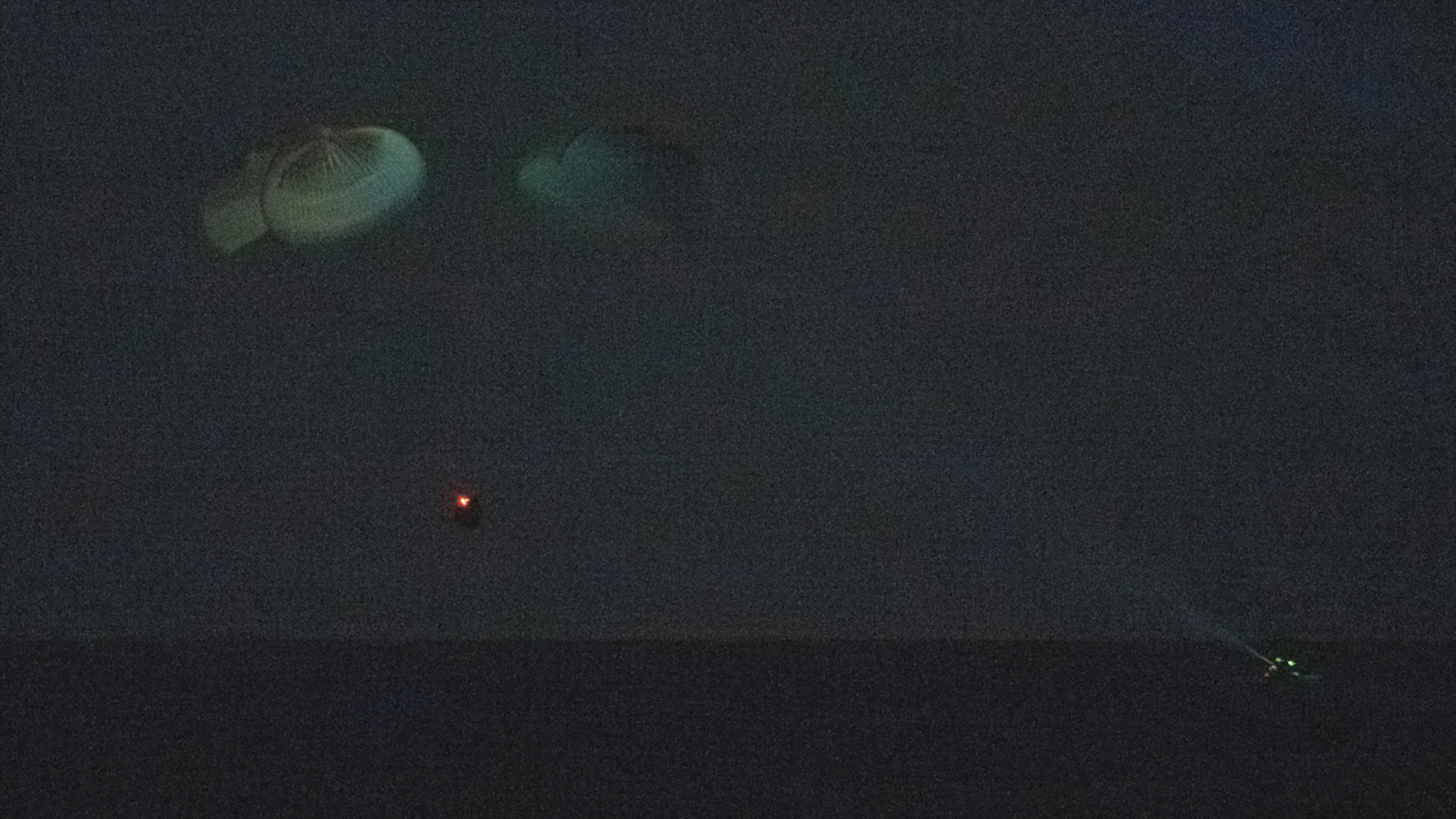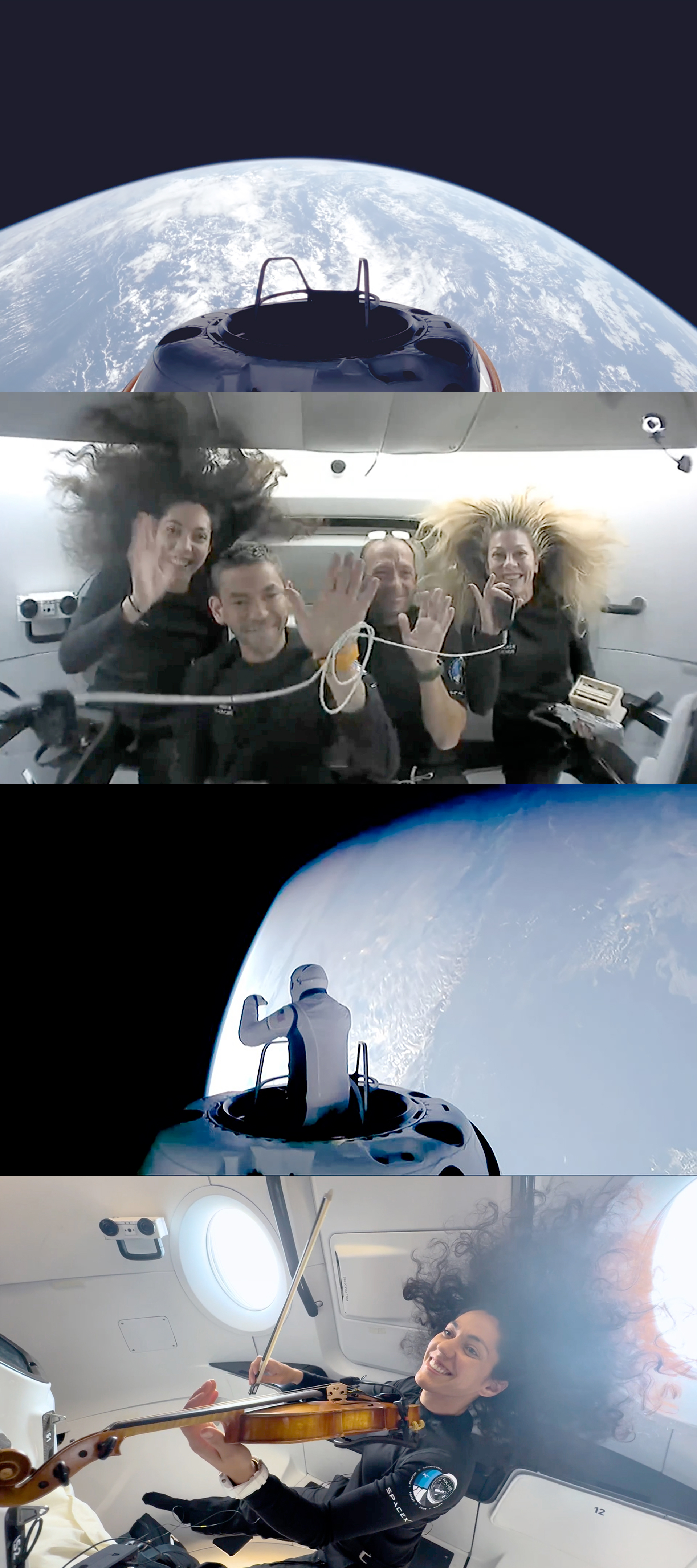
Four private astronauts are back on Earth after a five-day mission that set firsts and broke records in an effort to advance human spaceflight.
Polaris Dawn mission commander Jared Isaacman, pilot Scott "Kidd" Poteet and mission specialists Sarah Gillis and Anna Menon splashed down on SpaceX's Dragon spacecraft "Resilience" in the Gulf of Mexico, off the southern tip of Florida on Sunday (Sept. 15). Their landing, at approximately 3:37 a.m. EDT (0737 GMT), brought to an end the first of three planned Polaris Program missions all being funded by Isaacman, a 41-year-old billionaire entrepreneur and private jet pilot.
"We are mission complete," radioed Isaacman to SpaceX's mission control soon after splashing down. "Thanks for all the big help pulling this mission together."

The Polaris Dawn mission was notable for its numerous history-making activities, some of which had not been challenged in more than 50 years.
From the beginning, the flight marked the first time that SpaceX saw two of its own employees launch on its spacecraft. Gillis and Menon are lead space operation engineers at the company, the earlier overseeing astronaut training and the latter serving in mission control. In addition to being a mission specialists, Menon also took on the role of the crew's medical officer.
Isaacman was the second private astronaut to launch twice on Dragon, having previously led (and underwritten) the 2021 Inspiration4 mission. (The first was former NASA astronaut and Axiom Space chief astronaut Michael Lopez-Alegria.)
Less than 24 hours after reaching their preliminary orbit, the crew achieved their first goal, climbing higher over Earth than any previous human spaceflight since the last Apollo astronauts left for the moon in 1972. In reaching 875 miles (1,408.1 km), the Polaris Dawn crew broke the 58-year-old record set by NASA's Gemini 11 crew by 22 miles (35 km).
Gillis and Menon also shared a new record for the farthest distance traveled away from Earth by a woman.
The record high altitude enabled the crew and SpaceX to observe how exposure to increased radiation levels affected the Dragon's systems and the astronauts' health. The data collected will help prepare for future missions that send people back to the moon and onto Mars.
On the mission's second day, the Polaris Dawn astronauts contributed to a new record for the most humans in Earth orbit at the same time. Together with their four-member contigent, the three crewmates aboard a newly-launched Russian Soyuz, three taikonauts on China's space station and the nine astronauts and cosmonauts on the International Space Station totaled 19 people off the planet.
Isaacman, Poteet, Gillis and Menon became the first four people to be exposed to the vacuum of space at the same time when on the mission's third day the Dragon was depressurized in preparation for the world's first commercial spacewalk. Isaacman and Gillis took turns partially emerging from the capsule's upper hatch to test SpaceX's new EVA (extravehicular activity) spacesuit. The two performed the 20th and 21st "stand-up EVAs" in history, lasting about 10 minutes each.
On their last full-day in orbit, the Polaris Dawn crew tested SpaceX's Starlink satellite network to downlink the first violin performance in space. Gillis played "Rey's Theme" from "Star Wars: The Force Awakens" as composed by John Williams. Once transmitted to Earth, Gillis' solo was mixed with various recorded orchestral performances to produce "Harmony of Resilience."

In addition, the crew conducted 36 experiments from 31 partners, including NASA, Johns Hopkins University and the United States Air Force Academy.
They were also the first to snack on Doritos in space. Frito-Lay developed a "safe-for-space" chip by replacing Doritos' famous "dust" with oil-based flavoring, which was then applied to bite-size ("Mini") Cool Ranch chips in order to minimize the chances of crumbs that could float away and interfere with the spacecraft's system in the microgravity environment.
The Doritos partnership was part of the crew's efforts to raise funds for St. Jude Children's Research Hospital. In addition to the more than $500,000 received from Frito-Lay, the astronauts also flew artwork, jewelry and other memorabilia to be auctioned on behalf of St. Jude's.
Further, SpaceX sold copies of Menon's children's book, "Kisses from Space," which she read to pediatric cancer patients from space, and duplicates of the mission's plush "zero-g indicator," Asteroid, the shiba dog, with all of the proceeds benefiting St. Judes.
The Polaris Dawn missin concluded with one more entry in the history books: the landing off the coast of Dry Tortugas, Florida, was the southern most splashdown in the Gulf of Mexico by a crewed spacecraft.
Poteet, Gillis and Menon were the 618th, 619th and 620th people to orbit Earth and 705th through 707th people to fly into space, according to the Association of Space Explorers' Registry of Space Travelers (Isaacman was the 568th in orbit and 588th in space when he launched on Inspiration4). The Polaris Dawn rookies were also SpaceX's 50th, 51st and 52nd astronauts to fly on Dragon.
The Polaris Dawn mission was the third spaceflight for "Resilience," which earlier was used by Crew-1 and Inspiration4. It was SpaceX's fifth commercial mission, second free flyer (it did not dock the International Space Station or other platform in space) and the company's 14th crewed flight since 2020.
Follow collectSPACE.com on Facebook and on Twitter at @collectSPACE. Copyright 2024 collectSPACE.com. All rights reserved.







